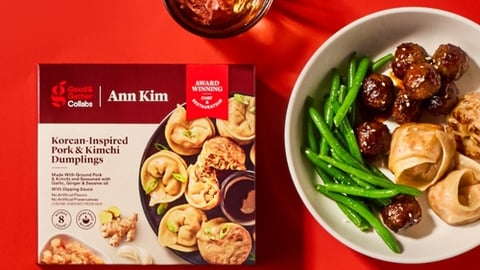Major Ice Cream Makers Pledge to Eliminate Artificial Colors
An effort led by the International Dairy Foods Association (IDFA) will lead to the elimination of certified artificial colors from ice cream made with real milk by the end of 2027.
According to the IDFA, dozens of ice cream companies are pledging to eliminate the use of certified artificial colors Red 3, Red 40, Green 3, Blue 1, Blue 2, Yellow 5, and Yellow 6. The commitment represents companies making more than 90% of the ice cream volume sold in the United States.
“I am proud of ice cream makers and dairy foods companies for stepping up for American families by making this voluntary commitment to provide ice cream and frozen dairy treats without certified artificial colors,” said Michael Dykes, D.V.M., president and CEO of IDFA. “Americans are passionate about their ice cream, and the IDFA Ice Cream Commitment will ensure wholesome, indulgent ice cream products made with real milk from American dairy farmers remain a special part of our lives as state and federal policies evolve.”
Store Brands Spotlight: Experts Discuss The Ban of Red Dye No. 3
The IDFA Ice Cream Commitment applies to products made with real milk sold at food retail (including supermarkets, grocery stores, convenience stores and online retailers) by the nation’s commercial ice cream makers. In addition to branded and private label sales at food retail, many of the nation’s commercial ice cream makers distribute their products to restaurants, ice cream parlors and scoop shops across the country.
This initiative does not apply to products made with non-dairy ingredients or those made in-house by small ice cream shops or restaurants (i.e., food service).
“From small independent companies to family-owned businesses going back generations, to large multi-national companies, we have all come together in a true industry-wide effort to make these changes,” said Andy Jacobs, chair of the IDFA Ice Cream Segment Board and chief executive officer of Turkey Hill Dairy.
According to the U.S. Food and Drug Administration (FDA), certified artificial colors are safe for use in foods when used in accordance with FDA regulations. However, states are beginning to take steps to ban the use of certain ingredients from food.
West Virginia has passed a law phasing out their use in foods sold at retail, and several states are phasing out certified artificial colors in school foods. The IDFA said this misalignment of federal and state policies could disrupt how and where foods are marketed and sold.




